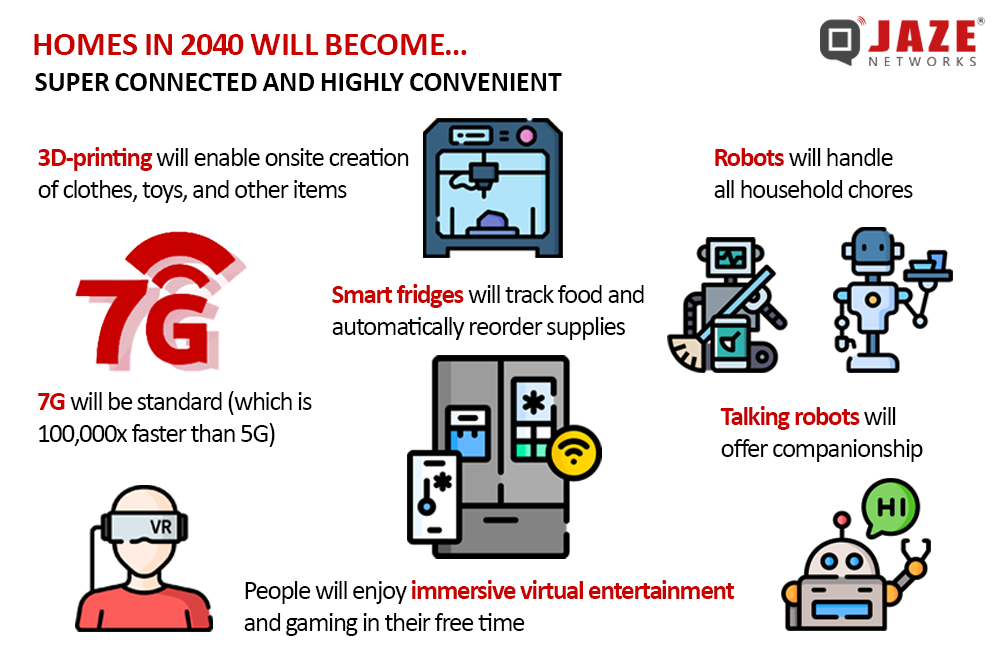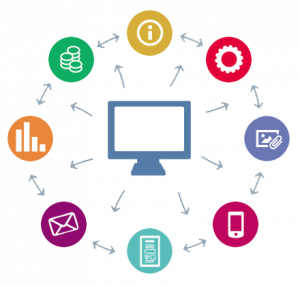Imagine returning home after a long workday to find everything prepared for you—a cup of tea and dinner ready just as you like it. While this may seem fantastical, futurologist Ray Hammond predicts such scenarios could become reality by 2040.
The Emergence of Smart Homes
In the coming two decades, technological advancements have the potential to transform our living environments into self-sustaining ecosystems. Consider the prospect of homes constructed using 3D printing technology, with robotic workers assembling the components. This innovation could result in a substantial reduction in construction costs—potentially by as much as 60%—and timelines, allowing for new residences to be move-in ready in as little as two weeks. Equipped with smart sensors, these homes will intuitively respond to the needs of their occupants, fundamentally altering our interactions with our living spaces.

The Advent of 7G Connectivity
By 2040, the introduction of 7G technology may provide internet speeds up to 100,000 times faster than current 5G networks. Such advancements would enable the creation of immersive virtual reality experiences that blur the lines between digital and physical realities, transforming the ways we socialize, learn, and entertain ourselves.
Security in a Digital Fortress
The inconvenience of misplaced keys may become a relic of the past, as homes of the future will be secured through sophisticated facial recognition systems capable of identifying not only humans but also pets. Homeowners will have the capability to monitor their residences remotely, ensuring security even in their absence. Furthermore, continuous updates from maintenance sensors will detect potential hazards before they escalate, thereby enhancing the safety of these digitally fortified environments.
Achieving Energy Independence
Future residences are anticipated to utilize 75% less energy and to implement efficient water recycling practices. Innovations in solar technology will replace traditional bulky panels with aesthetically pleasing windows that also produce power. This move toward energy independence is vital as we strive for sustainable living solutions.
An Interactive Experience
The homes of the future will serve as responsive environments, equipped with voice recognition technology to facilitate commands for temperature adjustments, meal preparation, and more. Robotic assistants will manage household tasks, oversee grocery orders, and maintain gardens. Cooking will become increasingly effortless, as smart appliances prepare meals according to pre-programmed recipes.
Evolving Shopping and Entertainment
The potential of 3D printing may extend beyond housing to encompass clothing and household items, thus streamlining the shopping experience. Additionally, entertainment will evolve to be more interactive, integrating virtual and augmented reality. This may allow individuals to engage with holographic representations of historical figures or partake in immersive experiences that stimulate all five senses.
While the vision of future homes is intriguing, it prompts critical questions regarding the pace at which we can transition to this digital future. Factors such as technological innovation, economic conditions, and societal acceptance will play significant roles in shaping our living environments.
In the future, more devices will be connected to the Internet than ever before. Each device will require a unique IPv6 address, as the IPv4 pool is nearly exhausted. Service providers will need to roll out services exclusively on IPv6 to accommodate the increased number of connected devices. Adopting IPv6 today will ensure a smooth transition to handle the growing number of IoT devices in the future.
Jaze ISP Manager helps ISPs deploy IPv6 services on their networks, integrating with leading BNG providers to be future-ready for IoT. By eliminating the traditional NAT with IPv4, it ensures seamless Internet connectivity. Click here to learn more.






